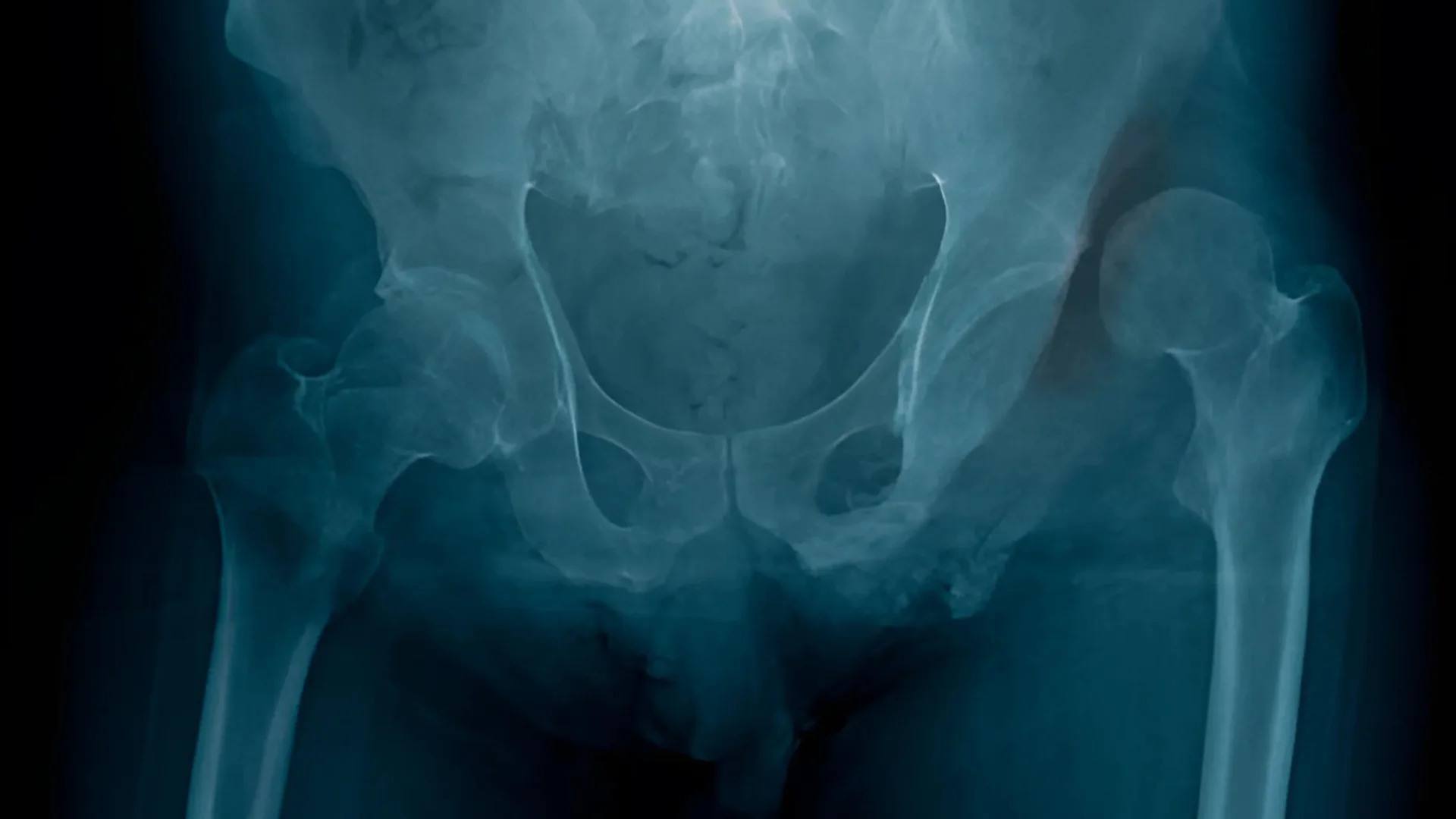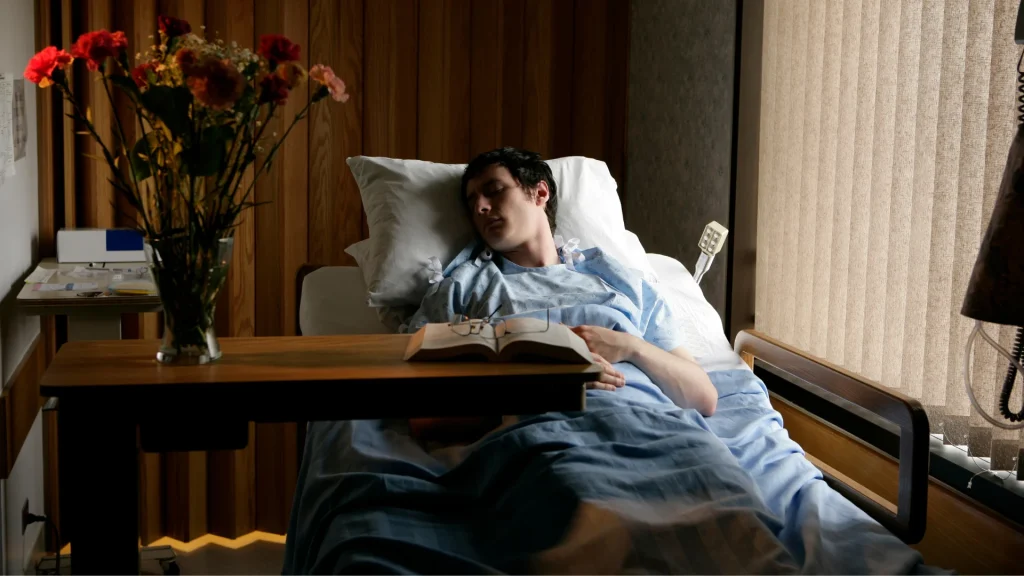Dislocated Hip: Symptoms, Diagnosis, Treatment & Recovery

Overview
A hip dislocation occurs when the ball of the femur moves out of its socket in the pelvis. This happens due to a sudden, strong impact, often during accidents or falls. The condition requires immediate medical attention to prevent further complications like nerve damage or reduced blood flow to the joint.
What is Hip Dislocation?
A hip dislocation occurs when the ball-shaped head of the femur is forced out of the acetabulum, the socket in the pelvic bone. This injury is typically caused by high-energy trauma, such as car accidents or significant falls. Hip dislocations also occur in people with preexisting conditions that weaken the joint.
Causes of Hip Dislocation
Motor vehicle accidents: These are the most common cause, often due to the high impact involved.
Sports injuries: Contact sports, like football or rugby, lead to hip dislocations from sudden impacts or falls.
Falls in older adults: Older adults with brittle bones or balance issues are at higher risk of falling and dislocating their hip.
Types of Hip Dislocation
Posterior dislocation: This is the most common type, where the femoral head moves backwards out of the socket. It often happens when the hip is bent and struck with force.
Anterior dislocation: Less common. It occurs when the femoral head moves forward, often when the hip is extended and impacted.
Symptoms
Immediately After the Injury
Severe pain in the hip or groin: this type of pain is often sharp and debilitating, also it makes it very difficult to move your leg.
Visible deformity in the leg or hip: The affected leg may appear shorter or rotated at an abnormal angle.
Mobility-Related Symptoms
Inability to move the leg or walk: The dislocation immobilizes the joint, preventing any normal movement.
Stiffness or resistance when trying to move: The joint may feel locked or stuck in place.
Sensory Changes
Numbness or tingling in the leg: These symptoms often occur when nerves are compressed or damaged.
Coldness in the affected area due to reduced blood flow: A dislocated hip will disrupt the circulation, causing the leg to feel cold.
Secondary Symptoms Over Time
Swelling and bruising: The area around the hip may become visibly swollen and discoloured as the injury progresses.
Muscle weakness or soreness: Prolonged immobility and tissue damage will lead to muscle fatigue and discomfort.

Diagnosis
Checking leg length differences: The affected leg may appear shorter than the other.
Observing abnormal leg positioning: Your leg might appear rotated either inward or outward, which indicates dislocation.
Imaging Techniques X-rays for confirmation: They give a clear view of a dislocated hip.
MRI Scans to Assess Soft Tissue Damage: These scans allow healthcare providers to identify injuries to muscles, ligaments, and tendons surrounding an injured area.
Treatment
Immediate First Aid
Do not move the person: Movement can worsen the injury or cause further damage.
Call for emergency medical help: Prompt medical attention should be given to address the dislocation and prevent complications.
Immobilize the hip: If possible, keep the joint in its current position until help arrives.
Closed Reduction Procedure
In most cases, doctors will manually realign the dislocated hip. This procedure is performed under sedation or anesthesia to minimize pain and discomfort.
Surgery for Severe Cases
Open reduction procedure: If closed reduction is unsuccessful or there are fractures, surgery may be necessary to reposition the hip joint.
Repairing associated fractures or injuries: Surgery will also address damage to surrounding tissues, such as ligaments, nerves, or blood vessels.
Pain Management and Medications
Pain relief medications: Over-the-counter or prescribed medications will help manage pain.
Anti-inflammatory drugs: These may be used to reduce swelling and promote healing.
Recovery and Rehabilitation
Rest and Restricted Movement
Use of crutches or braces: These aids help to immobilize the joint and reduce weight-bearing on the affected hip.
Avoid strenuous activities: Rest is essential to allow the hip to heal properly.
Physical Therapy and Exercises
Guided exercises: A physical therapist can provide tailored exercises to strengthen the hip and restore mobility.
Gradual increase in activity levels: Patients should slowly return to normal activities as advised by their healthcare provider.
Long-Term Care and Prevention
Follow-up appointments: Regular check-ups ensure the hip is healing correctly.
Lifestyle modifications: Maintaining a healthy weight and avoiding risky activities will reduce the likelihood of recurrence.
When to Seek Medical Attention
You should always consult a healthcare professional if you face intense discomfort that prevents movement should be evaluated promptly. Numbness or difficulty moving the leg may indicate nerve or blood vessel damage which is an emergency.

Takeaways
Dislocated hips can be a debilitating and painful condition but proper diagnosis and timely treatment will lead to better outcomes. Being aware of common symptoms like severe hip pain, limited mobility and deformity will allow individuals to seek medical assistance quickly and minimize the risks of long-term complications.
FAQs About Hip Dislocation
Can a hip dislocation heal on its own?
No, a dislocated hip requires medical intervention to realign the joint and prevent complications.
How long does it take to recover from a dislocated hip?
Recovery will take several weeks to months, depending on the severity of the injury and the treatment provided.
What activities should be avoided during recovery?
Avoid high-impact activities, heavy lifting, and any movements that strain the hip until cleared by a doctor.
Can hip dislocations recur after treatment?
Yes, especially if the joint is weakened or if preventive measures are not taken.
Are children more likely to recover quickly from hip dislocations?
Yes, children heal faster, but it is best to consult a specialist for your treatment. Call HipXpert for a free consultation.
